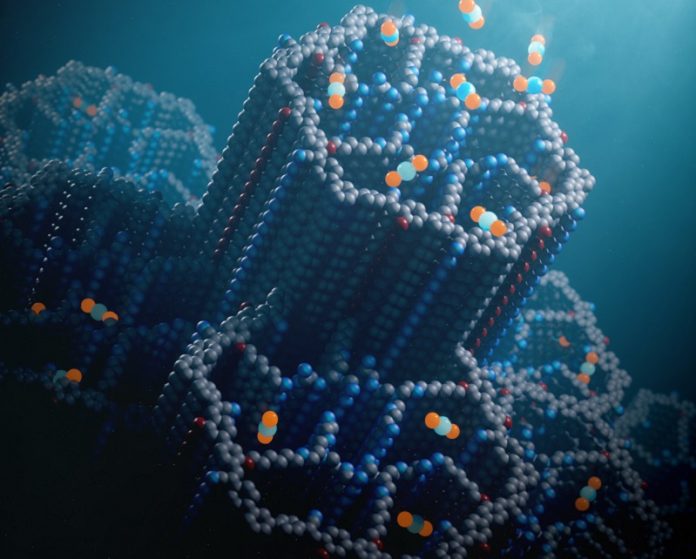
Researchers at the University of California, Berkeley, have developed a new type of absorbing material called a covalent organic framework (COF) that can capture carbon dioxide (CO₂) directly from the air.
This breakthrough could play a significant role in reducing atmospheric CO₂ levels and combating global warming.
The material is highly effective and durable, opening up new possibilities for capturing and storing carbon.
Why carbon capture matters
Capturing and storing CO₂ is critical to reducing greenhouse gases and slowing global warming.
Most existing technologies are only efficient at capturing CO₂ from sources like power plant exhaust, where concentrations of CO₂ are very high.
However, capturing CO₂ from ambient air, where levels are much lower, is much more challenging.
This method is known as direct air capture (DAC) and is necessary to reverse the increasing CO₂ levels, which have now reached 426 parts per million (ppm). This is about 50% higher than pre-industrial levels.
Without effective DAC methods, it would be difficult to achieve the global goal of limiting temperature rise to 1.5°C (2.7°F) above historic averages, as set by the Intergovernmental Panel on Climate Change (IPCC).
A new material with high potential
The new material, named COF-999, was created by a research team led by Omar Yaghi, a professor of chemistry at UC Berkeley.
Unlike other materials, COF-999 does not break down when exposed to water or other common air contaminants. This makes it more stable and reliable for long-term use in carbon capture systems.
The researchers tested COF-999 by passing outdoor air through a small tube containing the material. According to Yaghi, COF-999 was able to completely clean the air of CO₂. “It breaks new ground in our efforts to address the climate problem,” Yaghi said.
How COF-999 works
COF-999 is built using strong covalent carbon-carbon and carbon-nitrogen double bonds. These bonds provide a rigid structure with tiny, regularly spaced internal pores. These pores are lined with amines, which are molecules that bind to CO₂. The COF can then absorb CO₂ from the air.
The research team’s previous material, called MOF-808 (a type of metal-organic framework), also showed potential for CO₂ capture but degraded over time. The problem was that MOFs contain metal atoms that aren’t stable under certain conditions. COF-999, on the other hand, is held together by strong covalent bonds, making it more durable.
Zihui Zhou, a graduate student and lead author of the study, explained that a small amount of COF-999—about 200 grams (less than half a pound)—can capture as much CO₂ in a year as a tree.
COF-999 has several advantages over traditional methods of capturing CO₂. Most current technologies use liquid amines, which require large amounts of energy to regenerate. In contrast, COF-999 can release the absorbed CO₂ by heating it to only 60°C (140°F). It also remains stable over 100 capture and release cycles without losing its capacity.
In their experiments, the researchers showed that COF-999 can reach half of its capacity within 18 minutes when exposed to air at 25°C (77°F) and 50% humidity. With further optimization, the researchers believe the process can be made even faster.
Yaghi is optimistic that new technologies, like artificial intelligence (AI), can help design even better materials. He is the scientific director of the Bakar Institute of Digital Materials for the Planet (BIDMaP) at UC Berkeley.
This institute uses AI to find the best chemical conditions to create new MOFs and COFs for carbon capture and other applications.
Yaghi’s team hopes that with the combination of advanced materials and AI, more cost-effective and efficient solutions for carbon capture can be developed to help fight climate change.
The ultimate goal is to create easily deployable materials that can make a real difference in reducing CO₂ levels and protecting our planet.



